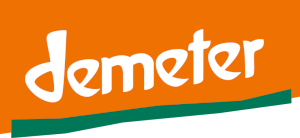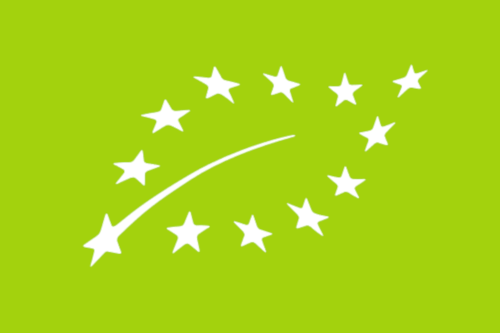What is an Arche-Hof?

Deutsches Rotvieh/Angler or German Red Cattle
Some say the Deutsches Rotvieh/Angler or German Red Cattle have existed in these areas for over 5000 years. They were first mentioned in writing around 1600 and have remained a popular breed due to the quantity of their milk yield, and the quality of their milk proteins. Not to mention their natural red beauty which seems to stand as a contrast to the green rolling pastures of Lower Saxony, as well as a fine match for the traditional red architecture of the area.

Galina, the head Cow
Galina is the self-proclaimed leader of her herd of cows, a lady of significant stature, and the bossiest beast of the lot. She can been seen daily at the front of the herd on their walks to the field in the morning and back to the stables in the afternoon. She is the one being guided by rope, although she puts up somewhat of a resistance when she can, pulling the worker in the director on different trees or scattered apples that catch her eye.
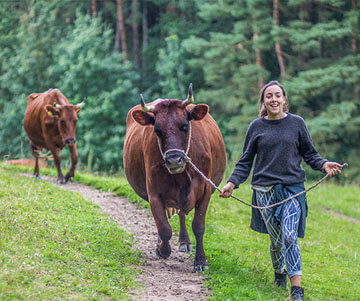
Each day is a battle against the flies that hang around her face, and she spends a great amount of her time on the field whipping her head against her side to rid herself of the insect annoyance. The rest of her time is spent grazing the grass, drinking water, or mounting the backs of her fellow female Cows – in a display of dominance.
Occasionally other cows will attempt to usurp the lead position in the herd, but they do not take this place for long. A rush with her horns puts any lower ranking Cow back in their place, and they will sure not make the mistake of challenging the mighty Galina’s dominance again.
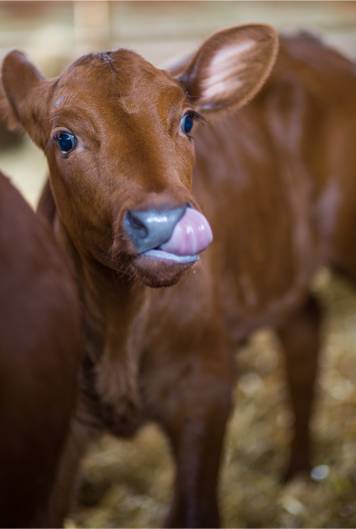
Tony the Bull
If Tony the Bull could talk, he would probably say something such as this: “Tony love Potato. Tony love his food. Tony want potato and power food. Give Tony food. Where are Tony’s cow friends? Mooooooooo.”

No, Tony the Bull can’t actually talk sadly. But this attempted understanding of Tony the Bull’s thoughts comes from many days of observing the Bull strolling around his territory, which is the Stables where he lives with the 20+ milking cows. When a farm worker from Sammatz is nearby with either Potatoes or power food (also known in Deutsch as Kraftfutter, is a combination of seeds and grains with all Cows love), Tony will appear excited and follower the worker around until he is given some of the potatoes or a scoop of the power food grain mix. His long tongue with extend to reach any potato offered to him, and it can be some wonder for new workers or onlookers just how large in size his tongue is.
During the day, when his female cow companions are herded to the field, Tony stands in the stables, either eating, sleeping or looking for them. It is perhaps a little sad that he doesn’t understand where his Cow friends go to each day, and he will often call for them which is signature ‘moo’ – a very long and loud kind of a moo, which can move from low to high sounds with such intensity, that surely if there was a competition for the best vocal chords on the farm, Tony we come at the top.
Tony is popular with many of the people living at Sammatz, who will often stop to give him a pat or say hello on their way past. Occasionally Tony will try and escape, and when this happens he will perhaps attack a hay bail or wheel barrow with his horns, but he is yet to attack any person directly or cause any major damage. For this reason we think of Tony as a kind hearted bull, although he is very muscular and impressive in size, and surely is a prime example of the male gender of his breed.
Angler Sattelschwein pigs
Although this old pig breed was popular towards the middle of the 20th century, it saw a decline in popularity due to its meat style not being in favour – which is due to the natural fat elements. The decline was such that when our Arche farm opened several years ago, there were only eight Sattelschwein boars in existence. We were lucky enough to have one of them. They have very strong natural instinct behaviour, are generally healthier and can survive in more varied and harsher conditions than commercially bred Pig breeds. They raise many healthy piglets, with ease, and perhaps also luckily, the meat quality is now again considered very good.
Good parents
You can find our healthy and happy Angle Sattelschwein pigs and piglets living in many places around the Sammatz Archehof. Because of the genetic strength of this breed, with their behaviour of traditional pigs rather than factory pigs very evident, they are able to be kept living in the fields throughout the year, not just in summer but winter as well. The old pigs can be found running around in special areas near the grassy fields for our cows, whereas in the stables you will find two big Sattelschwein Mothers, a Father and their offspring, little healthy piglets whose curiosity and intelligence is evident upon even a short visit.
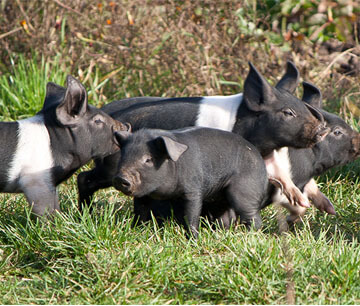
This breed
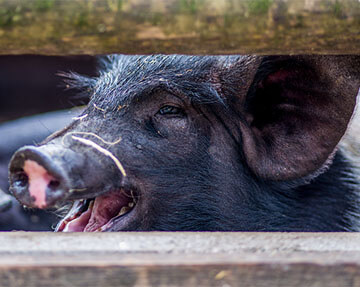
They, therefore don’t need to be housed indoors as other more genetically mixed breeds would have to. Of course, they’re an intelligent
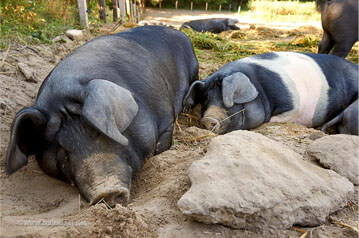
They will also greet humans in an excited manner, but it is particularly interesting to see the instinctive association the pigs have made between the tractor and food.
As well as being a friendly and fun animal to observe, they give a quality meat product. Our current supplies can be found at our farm shop.
Goats
Breed details
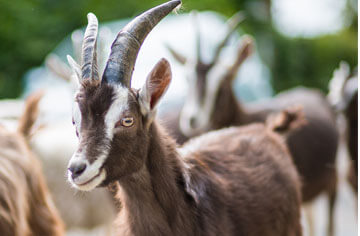
Famous goats: Astrid (no longer at Sammatz) and Felix
Of the animals that have lived at Sammatz, there are few more famous than the sleek white coated Astrid. The odd one out of the Goats, she had no horns and was devastatingly beautiful – testifying to her attractiveness were the crowds of visitors gathering frequently to give attention to her. The other goats knew this and would bully her to no end. She was often found hiding in a corner, away from the goats, eating when they were not near. Spotted by animal film agents, she was picked up as an goat-actress for filmtierhof.de, and would appear in many commercials and even a feature film, Schellen-Ursli (Xavier Koller, 2016).
Astrid is no longer with us – no, she hasn’t passed away, she’s back living at her owner’s house now, but there are still many other interesting goat that can be found living at Sammatz.
Another acting goat is the male buck, Felix – who can be found strutting his stuff around the farm.
Name: 30185 (aka Cindy)
The goats are milked twice daily for use in the Meierei for making feta and other cheeses with. One of the more popular
That is not a particularly catchy name, because it is also her code number, and many of the goats here do not have official names. 30185 has also been nicknamed Cindy by an Australian girl called Maddie who works at Sammatz and often milks the goats. Maddie has described the goat Cindy as one of her favourites, as she is friendly, likes people and will often be the first goat to approach a human, looking for hugs and attention. She often perches on a ledge next to where the milking is happening, and tries her best to sniff and lick the milking people, often resting her head on their shoulder. This can be nice for those people looking for goat attention, but also a bit annoying if they’re just trying to get the milking finished as fast as possible.
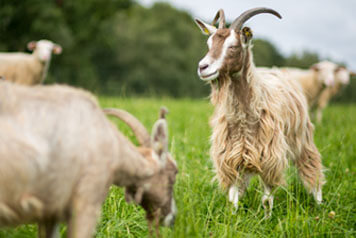
As with the other goats, Cindy enjoys her daily walks to the field, stealing the occasional bite from a nearby bush on the way, and once at the field she enjoys competing with the other goats for a place on top of the water tank.
Spend some time with the goats at your next visit to Sammatz. Maybe you’ll meet a goat more famous than you realise, or get a lick from a particularly friendly goat such as Cindy, or maybe you’ll see the Zeige battling to stand on the highest platform possible.

Sheep
Ostfriesisches Milchschaf or East Friesian Milk sheep
Our sheep are known as East Friesian, a Northern German breed and known as one of the best breed’s in terms of milk yield. They are pure bred, and are often used around the world to cross-breed and strengthen the yield of international sheep types. Over a 200 to 300 day lactation cycle, the East Frisian sheep can produce up to 600 litres of milk. The sheep originate from the Frisia area, and their original home was a dry heath type environment. They’re characterised by pink noses and head, legs and tails which are woolless. Their wool is also of a good quality, even if not the main purpose of the sheep.
Adventurous animals
The sheep is the standard farm animal in many parts of the world, but it’s presence and cuteness is not to be understated. They are a necessary part of our Archehof, which would not be the same without their sheepy contributions – that of milk which we use for our delicious

As well as sitting happily in our Archehof stables environment, and being milked in the morning and afternoons, the lambs and adult sheep are also herded to the fields daily and can often be seen running through the farm alongside the goats.

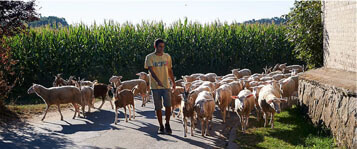
On the fields, they occasionally meet their smaller relatives, the
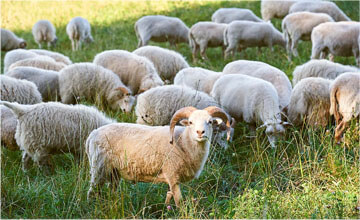
These more adventurous sheep occasionally find a way to break away, much to the bemusement of the farm working team. They don’t usually go far however and are easily hurded back to their home.
Take a visit to our gardens and stables and spend some time observing these most delightful farm animals, living in true bio-dynamic living standards.
Fowl:
Runner Duck

Descended from the mallard, and originally from South East Asia, so not an animal native to this German countryside, but still a delight to see waddling around the farm and garden landscape. They run fast, swim and cannot fly but are social animals, very keen on their food and good for keeping control of the snail population. Therefore they serve a practical role in the farm ecosystem, which is pest control – so our crops can grow without an infestation of ‹Schnecken› (snails), and without the need for pesticides.
In the mornings you might see the duck napping by the lake, head tucked under its breast, staying close to its fellow Enten family and perhaps with one eye open, ready to run from any human that may stray too close. They are an animal very suspicious of human behaviour, perhaps quite rightly, and prefer to spend their time foraging around for seeds and berries, or the left over Kraftfutter (power food) after it has been given to the cows. They can often be found running around the stables area looking for what spare animal food they can steal, before being chased away by workies.
To be able to develop a connection to a runner duck in the same way a farm worker develops a connection to one of the cows, is a difficult task. I can’t say that it’s easily achieved – as soon as you get close to one, it will run away. But the wingless tall creatures are very relaxing to watch (and quite amusing to see running, in their upright waddling style) and seem to suit the pond and garden environment that they inhabit quite well.
It also helps that they’re delicious on a plate, when it’s the time of the year for meat.
Chicken
One of the many seriously endangered chicken species at Sammatz is the Ostfriesische Möwen or East Frisian Seagull, which was named Endangered Farm Animal of the Year 2012 by the Society for the Conservation of Old and Endangered Domestic Breeds. This is a fast growing breed, which are excellent parents, and known for their quality meat. They are striped black on their feathers with silver or gold around the neck.
Another of these species is the Deutsche Sperber, also called the German Sparrowhawk – known for its strikingly piebald feather pattern, similar to the bird of prey of which is it’s namesake – they are considered to be an active and friendly chicken.
We also have the light brown with black neck and tail Vorwerkhühner, originally bred by Oskar Vorwerk in Hamburg in 1900 and presented to the public in 1912 in Hannover. The breed declined in the mid 20th Century but has found a resurgence due to the efforts of the local Archehof breeding community.
Finally we want to make a special mention of the Sulmtaler chicken species from the Austrian region Steiermark, which is much loved for its delicate and graceful look.
These rare chicken breeds are important to foster and help grow in numbers, for reasons benefiting nature and consumers. A diverse stock of heritage chickens contributes towards a healthy ecosystem, and the rare breeds have some characteristics that make them significantly healthier than factory bred or hybrid chickens. Of course, the yield in eggs is smaller being just the amount a hen would naturally lay in the course of a year.
They also taste very good, like everybody knows who has savoured these many coloured eggs in Sammatz.
As the chicken is one of the oldest domesticated animals, living alongside humans and being farmed for thousands of years is easily overlooked. But at Sammatz is living a gang of chooks with their own personalities, showing the variations possible within different breeds of chicken.
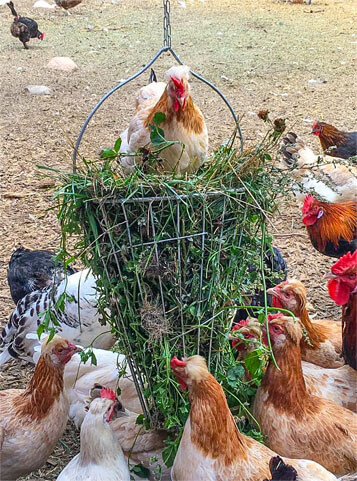
Der Besucher trifft die unterschiedlichen Hühnerrassen an verschiedenen Orten des Hofs: Einige leben in einem großen Stall mit Auslauf bei den Kühen, andere in der Nähe der Gärten am Waldsee, wieder andere in einem mobilen Hühnerstall, der auf einer großen Weidefläche ‹wandert›. Tagsüber durchforsten sie, neben anderem Geflügel wie beispielsweise den stattlichen Truthähnen, ihr Areal nach Futter. Nachts haben sie es in ihren Ställen warm und gemütlich. Manchmal spielen sie ihre eigene Version vieler Kinderzeichentrickfilme nach und erkunden unerlaubterweise die Gärten und die Gegend um den Kompost – aber normalerweise dauert es nicht lang, bis ihnen die Gärtner wieder zurück in ihr Gehege helfen.
Die Hühner erfüllen dadurch auch einen guten und praktischen Zweck, dass die Seelenpflege-bedürftigen Kinder und Jugendlichen des Kinderheims Peronnik oft mithelfen dürfen, die Eier zu suchen und die Ställe zu säubern. Ihr könnt die köstlichen Bio-Freiland-Eier im Hofladen bei den Stallungen kaufen, nur ein paar Schritte von den Heimatställen der Hühner entfernt.
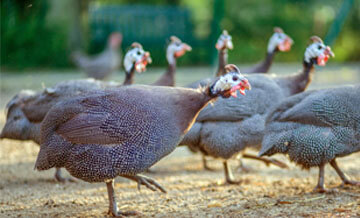
Donkey
The
Lovable fellows
The donkeys are an indispensable element of Michaelshof; their main work is pedagogy and therapy. Children are very welcome to take short rides around the farm. For the children with intellectual disabilities who live in Sammatz, we use them as therapy donkeys. In the past, they also pulled a carriage, but this is at a standstill for now, as the oldest donkey, Karla, decided to take a break. This is an example of how donkeys have their own views on what they do and what they prefer.
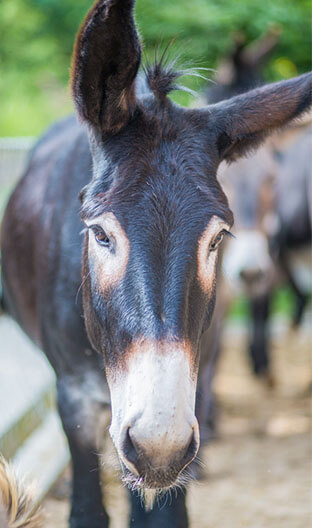
Karla is 21 years old, has smooth black fur and has lived in Sammatz since she was six. She was already trained as a mount for children when she came here. The second oldest donkey is called Kalinka; she is 15 years old and has a grey head. The lovely little herd of donkeys comprises not only of these German donkeys but also includes a Catalan giant donkey and a French donkey with a special coat pattern (‘zebra legs’).

Our donkeys are in the pasture during the day so they can have their freedom and stretch their legs. We also make sure that they do not eat too much. Since they come from a hot, dry climate, in which food is scarce, they would certainly get sick if they were given as much food as the horses.
They undergo a thorough education before they can be used as professional riding and therapy donkeys for children. Overcoming trust issues, becoming accustomed to a saddle and weight and finally to carrying people, the process can take a year or two. This is because a donkey does not readily listen to people or accept their orders.
Our animals not only visit the donkey school diligently but they also lead a happy life in the stables and on the pasture. When mucking out and feeding, the Peronnik children are there as solid helpers. For them the donkeys are endearing companions, a work experience and at the same time a form of therapy and education.
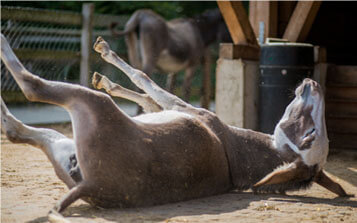
Schwarzwälder breed or draft horse
Originally bred as a light forest work Horse around the Black Forest region of Germany, the Schwarzwälder Fox now is popular as a leisure horse. It is on the endangered list of livestock breeds in Germany – as of 2012 there were 700 Bloodmares and 40 licensed Stallions. The breed is featured among the horses of Arche-Hof Sammatz.
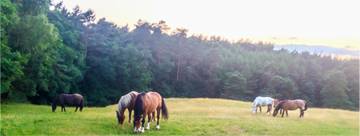
Charlie
Charlie is one of our rarest breeds amongst the animals in the Sammatz farm, of the Schwarzwälder breed of draft horse, but also not the most common type, instead his ‘fox’ colour, distinguishes him as even rarer. He is one of the smaller horses in the stables and can be spotted with his signature white mane. Friederike, one of the professional horse riders living at Sammatz is one of the closest to Charlie and she’s shared her experiences with this writer, explaining that Charlie is an integral member of the horse family here. “He’s really diverse, he can do a lot of things” explains Freddie – which includes taking the disabled children which live within the Sammatz community for walks. As well as working as an occupational therapist of the Pferde sort, Charlie has also previously helped ploughing the fields. Freddie exercises him daily, making sure his walking, trotting and running techniques are of a fit and healthy kind and she also takes him along to a nearby riding school.
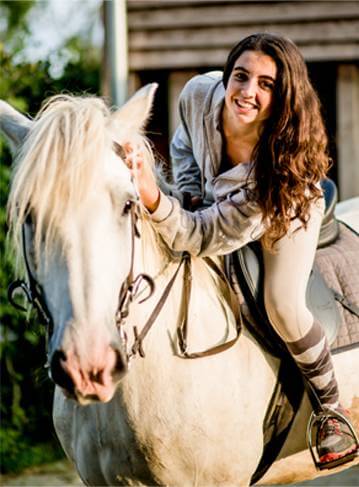
As with the other horses Charlie enjoys all kinds of food which is given to him.
He can be found within the Sammatz stables, hanging out with Katinka (a black horse), Luna (very ‘fox’ coloured), Lelek (with a black mane and black tale) and Applebee (a very large white horse). Charlie is one of the lower ranked within the horse pack but is very friendly, and will allow onlookers to admire him without any bother.


Cows with horns, Tony and other animal encounters
Our farm is a so-called Arche-Hof, which means that we stand for the conservation of old animal breeds. When visiting Sammatz, you can have close contact with them – farm animals to touch: cows, horses, goats, donkeys, pigs, sheep and poultry. Almost all are special breeds, all of which have a distinctive appearance.
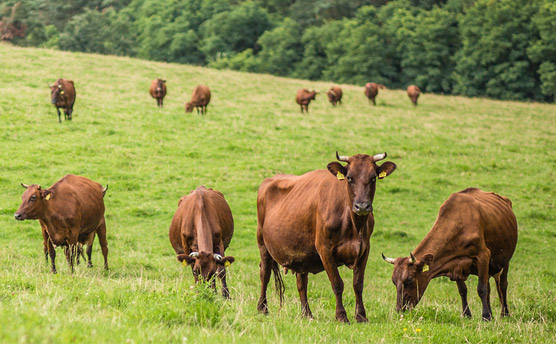
You will encounter the Angler cows, a breed of cattle that has lived in northern Europe for over five thousand years and has become a very rare. Their peaceful nature means that they are comfortable with human attention; you can be there every day as they walk across the farm on their way to the pasture. During the day you will meet the impressively sized bull Toni as well as the older cubs called heifers. In the late afternoon we feed the small calves by hand with milk – one of the many authentic farm events that you can witness.
Part of our goats
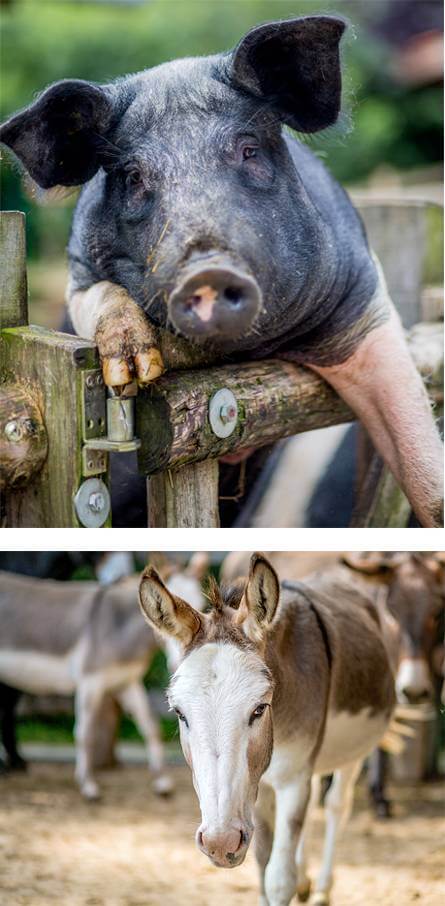
Our rustic pigs fit in perfectly with this mixed community of farm animals – not least because they eat up all our kitchen garbage with passion. At their pen you can often marvel at little piglets – that’s where many vistors stay the longest.
Sometimes you will see how the flock of sheep gallop past the café from their pasture to the stables. And in the open stables on the farm you’ll find a proud gang of horses. Charlie, a rare “Black Forest Draftblood” is particularly noteworthy with a beautiful, fox-brown coat and white mane. Our friendly local farmers, as well as the international helpers who work for us, are here to answer any questions about the animal breeds that call Sammatz their home.
Children love animals – just like grown-ups do
The Archehof with its various animals – the cute donkeys, the diverse poultry and the earthy pigs we did not mention – is a dream destination for every family outing. The kids won’t be able to get enough of the open stables. Adjacent to the stables is the farm shop which has many good things on offer; vegetables, fruits, Sammatzer dairy and meat products and many other delicious things to take home with you.
«Our little ones
just can’t wait to visit!»
Natural fodder – healthy food
Of course, our animals also receive something good every day. You will find large pastures in the vicinity of the farm where the animals spend their days in the summer months.
We also harvest the delicious hay for the winter nearby, in a field where a pasturage for the animals is not possible.
Here, the pastures are farmed using biodynamic methods, which means that no chemical fertilizers are applied. We only use natural manure which is treated with special herbs in order to promote growth and soil quality.
Livestock breeding – many questions, a lot to learn
The animals thank us for our kindness with good-tasting milk and – vegetarians and vegans have no fear! – tender meat that retains all its volume when cooked. Unfortunately, slaughtering the animals is a part and parcel of the process of animal husbandry, since no farm has infinite spaces for grazing and the animals are not wild. They would not survive in the wild. Should we simply let the old races die out?
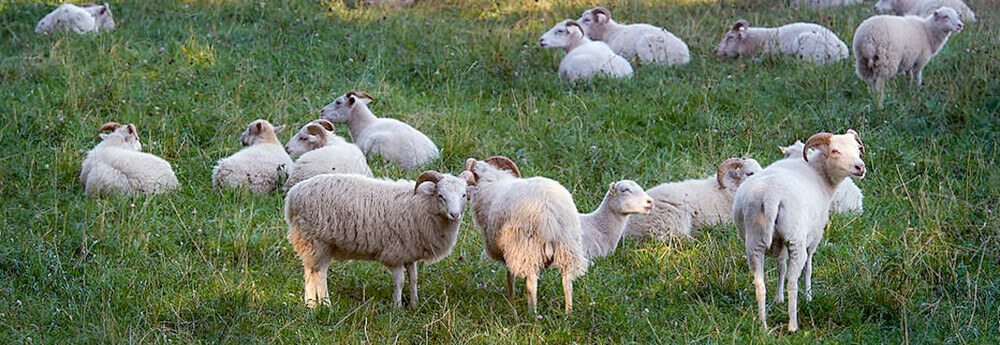
Can farm animals
lead a “happy life”?
We think so
Animals that are organically fed and cared for by loving people live a happy life. We are happy to make this possible!
Even the power food that our animals love so much comes from our own bio-dynamic cultivation.
It usually consists of a mixture of cereals, beets and potatoes all shredded together and it is obviously extremely tasty. So far, we have purchased the feed in individual components and mixed it ourselves. Since we can now lease additional acreage, we will largely grow the feed ourselves next year.
We are in a constant process of learning on our Archehof; every year brings new experiences. This keeps us constantly busy, both internally and externally. It is
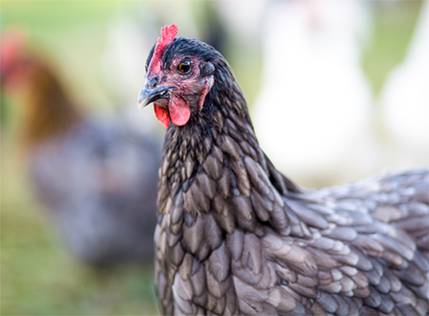
A trip to the farm
during a day out
at Sammatz
is a must.
We look forward to welcoming you!


